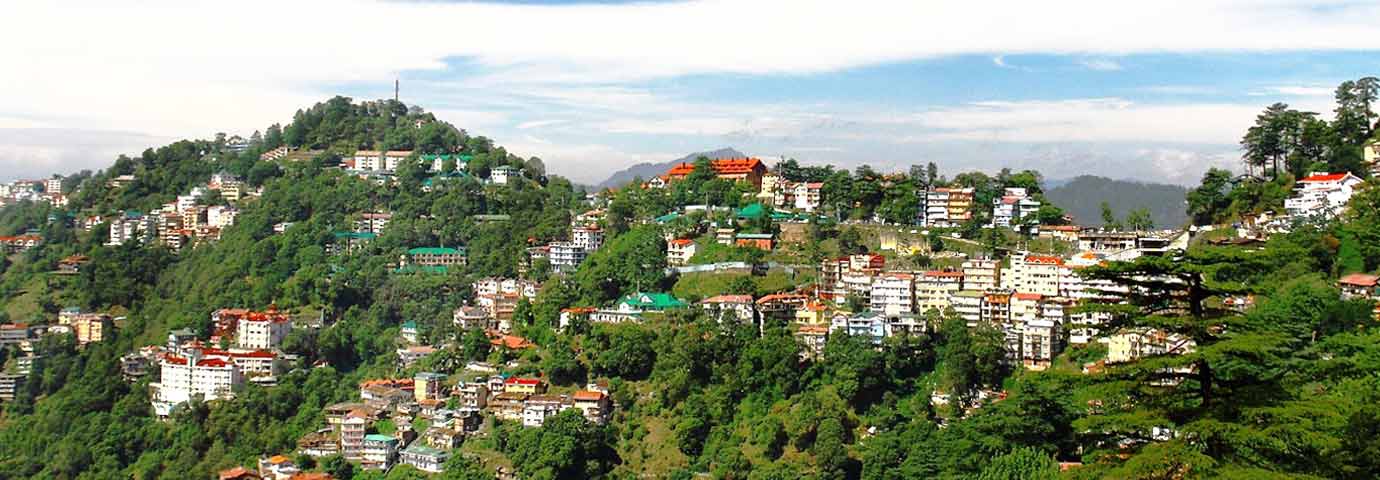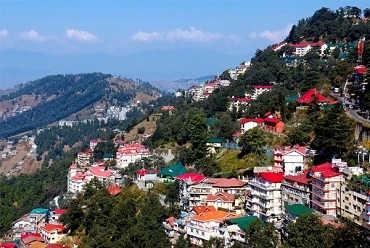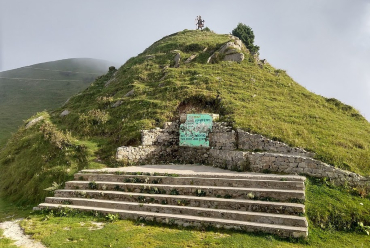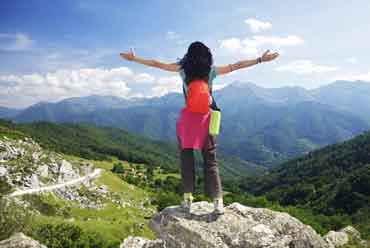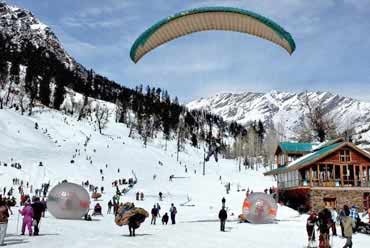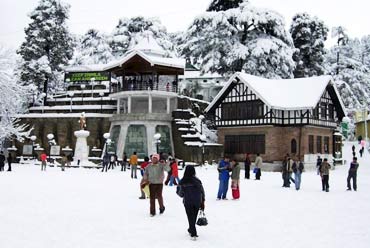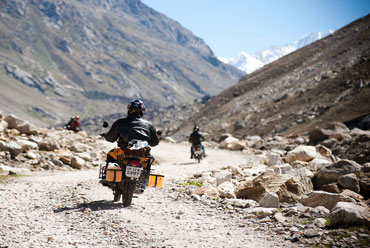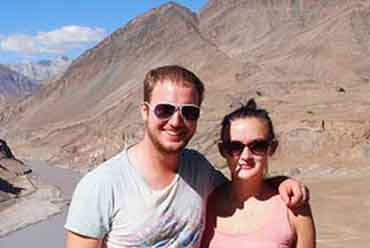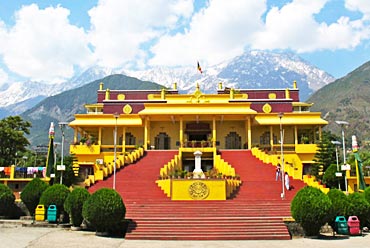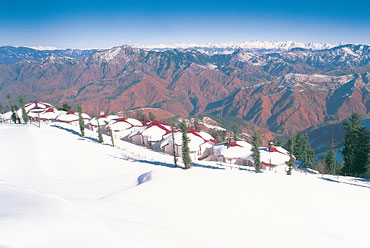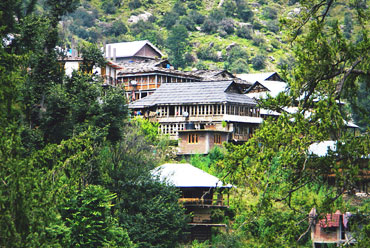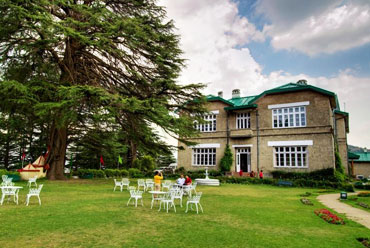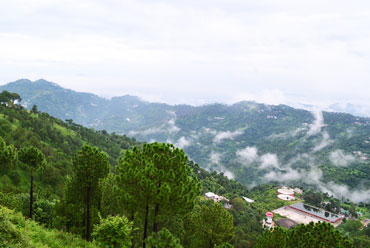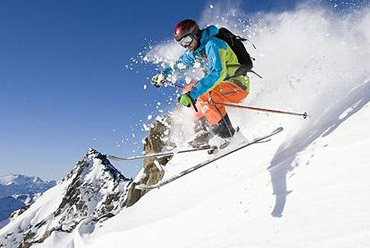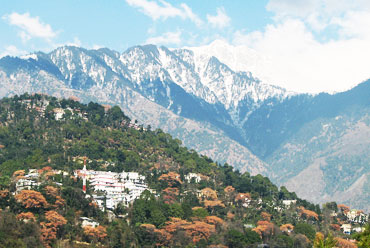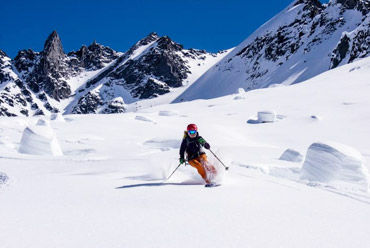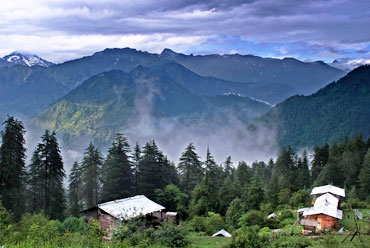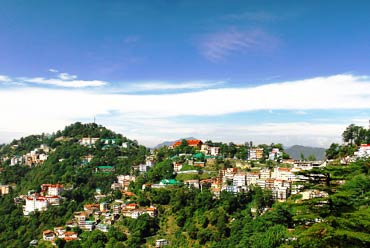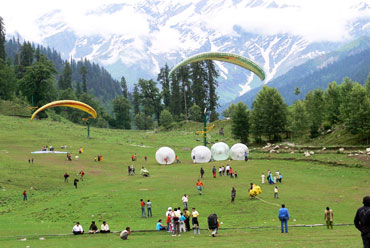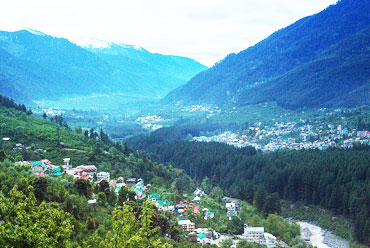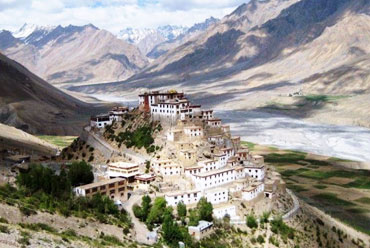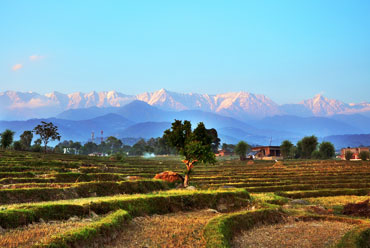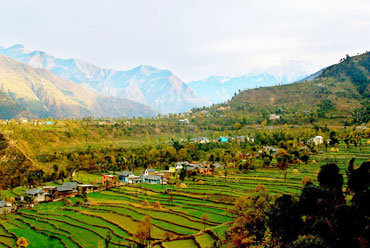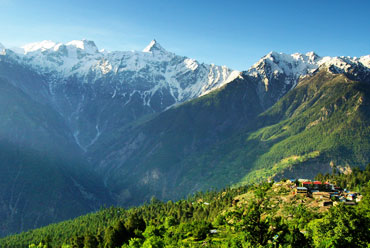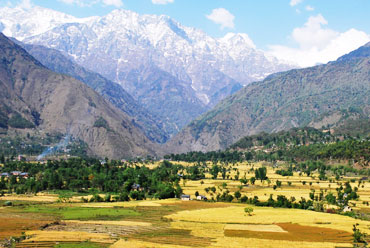Himachal Pradesh is an enchanting part of the Indian Himalayas and is often referred to as the magical showcase of nature's splendors. Verdant green meadows and wide valleys set against imposing snow-clad mountains; limpid lakes, torrential rivers and gushing streams; fruit laden orchards and gentle terraces of corn and tea all characterize this state. Honeymoon Resorts in Himachal Pradesh are great places to stay. Honeymoon Resorts in Himachal Pradesh offer a luxurious stay with the lap of Mother Nature. Honeymoon Resorts in Himachal Pradesh are romantic owing to their ideal setting. So, the next time you are planning to spend the golden time of your life in Himachal ,check out the Honeymoon Resorts in Himachal Pradesh. During the peak season Honeymoon Resorts in Himachal Pradesh are pre-occupied and advance booking is advisable.
After India became free in 1947, a number of princely hilly states were integrated into a single unit to be administered by the Government of India through a Chief Commissioner. As a result, Himachal Pradesh came into being as a part C state of the India Union on April 15, 1948, by integrating 31 big and small hill states of the region. In 1956, following the recommendations of the State Reorganization Commission, it was converted into a Union Territory. Subsequently, some more hill areas of the erstwhile Punjab state were added to this Union Territory and it was made into a full-fledged state, the status that it continues to have now.
Location
Punjab on the west, Uttar Pradesh on the southeast, China on the east, Haryana on the southeast, and Jammu and Kashmir on North border the Indian state of Himachal Pradesh. It extends from the latitudes 30°22'40" North to 33°12'40" North and longitudes 75°45' 55" East to 79°04' 20" East.
The entire region of Himachal Pradesh is hilly with the altitude ranging from 350 meters to 7000 meters above sea level. Forming a part of the Punjab Himalayas, the altitude increases from west to east and from south to north. Geographically, Himachal Pradesh can be divided into three distinct regions, the Shivalik or outer Himalayas, middle Himalayas or inner Himalayas, and greater Himalayas or the alpine zone.
The lower Himalayas include the districts of Hamirpur, Kangra, Una, Bilaspur, and the lower parts of Solan, Sirmaur, and Mandi commonly known as the Shivalik Hills. The altitude in this region ranges from 350 meters to 1,500 meters.
The middle Himalayas comprise the region between the altitudes of 1,500 meters and 4,500 meters. The districts under this region are parts of Sirmaur, Mandi, and the upper parts of Kangra, Shimla, and Chamba.
The greater Himalayas or the alpine zone is at an altitude of 4,500 meters and above. The region is cut across by the river Sutlej and comprises the Kinnaur and Pangi tehsils of Chamba, and some part of Lahaul and Spiti.
History of Himachal Pradesh
There are evidences of pre-historic humans existing in this region. It is also believed that a large number of people inhabiting this region had actually migrated from Central Asia and the Indian plains time to time. The first race to enter this region was Proto-Australoid, the second was Mongoloid, and the third was Aryan. There is mention in the Rig Veda of Dasyus and Nishads living in this region and their powerful king Shambra who had 99 forts. The Aryans, who were superior in war tactics, defeated the local tribes and settled here permanently. This period also saw the establishment of small Janpadas (republics) in Himachal. They had a good relationship with the Mauryans, which made sure that they remain independent for a long time. Their independence lost with the rise of the Guptas in the North Gangetic plains.
After the decline of the Guptas, several small kingdoms came to rule this hilly state and established their power in its different regions. They continuously fought with each other and the history of Himachal Pradesh is full of the stories and legends related to these kingdoms. The British established many hill stations in this region to protect themselves from the extreme heat and dust of the northern plains in the summer. Shimla became the summer capital of India and even today, many old houses and buildings tell the story of English grandeur. Himachal Pradesh, which had the status of a union territory after independence, was granted statehood in 1971.

